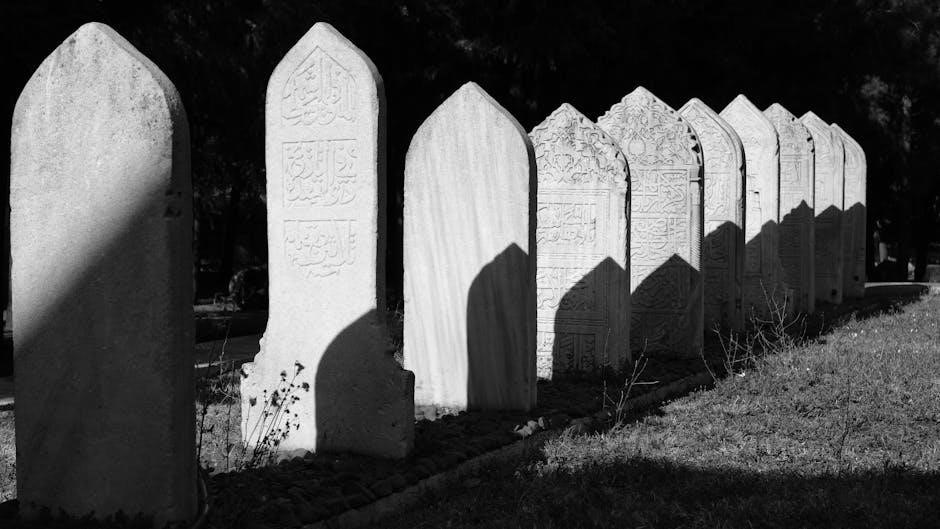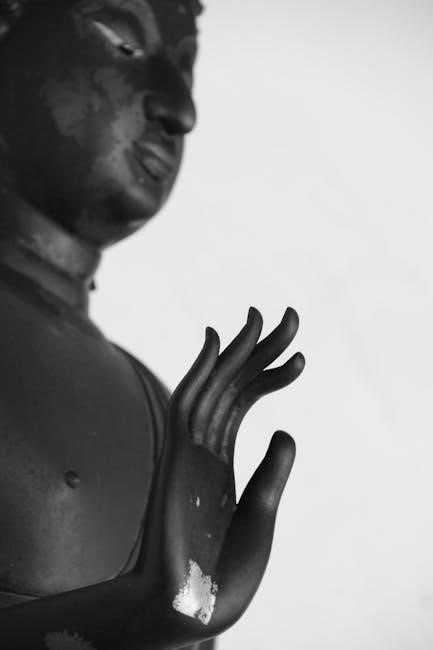The Silence of the Lambs script, written by Ted Tally, is widely available as a PDF, offering insight into the iconic thriller’s intricate plot and dialogue.
Background and Development of the Screenplay
The screenplay for The Silence of the Lambs was adapted by Ted Tally from Thomas Harris’s 1988 novel of the same name. Tally’s script meticulously captured the psychological tension and complex characters, earning widespread acclaim. Originally, Gene Hackman was set to direct and star but withdrew before completion. Jonathan Demme took over, bringing his unique vision to the project. Anthony Hopkins first received the script in 1989 while performing in London, immediately drawn to Hannibal Lecter’s depth. The screenplay’s development emphasized maintaining the novel’s suspense while refining dialogue for cinematic impact. Its success led to numerous accolades, including Academy Awards, solidifying its place in cinematic history. The PDF version of the script is now widely available for study and appreciation.
The Role of the Novel by Thomas Harris
Thomas Harris’s novel The Silence of the Lambs serves as the foundation for the screenplay, offering a gripping narrative that captivated readers worldwide. Published in 1988, the book is the second in Harris’s Hannibal Lecter series, introducing Clarice Starling and expanding the lore of the iconic cannibal. Harris’s meticulous characterization and intricate plot provided a rich blueprint for adaptation. The novel’s themes of obsession, transformation, and the darker aspects of human nature were seamlessly translated into the script. Its success as a bestseller ensured the story’s transition to film, where it achieved even greater acclaim. The novel’s influence is evident in the screenplay’s depth and complexity, making it a cornerstone of the film’s legacy. The PDF version of the script often accompanies the novel in studies of the story’s evolution.
Ted Tally’s Contribution as Screenwriter
Ted Tally’s masterful adaptation of Thomas Harris’s novel into the Silence of the Lambs script is a testament to his storytelling prowess. Tally skillfully condensed the complex narrative, maintaining the novel’s suspense and depth while tailoring it for the screen. His dialogue captured the eerie chemistry between Clarice and Lecter, enhancing the psychological tension. Tally’s script remained faithful to the source material, yet he infused it with cinematic elements, ensuring the story’s visuals and pacing were as compelling as the prose. His work earned widespread acclaim, solidifying the film’s place in cinematic history. The PDF version of Tally’s script is widely studied, offering insights into his approach and the film’s enduring success. His contribution was pivotal in translating Harris’s vision into a cinematic masterpiece.
Key Themes and Symbolism in the Script
The script explores obsession, transformation, and the duality of human nature. Moths symbolize change, while darkness and light contrast the moral complexities of its characters.
The Cat-and-Mouse Dynamic Between Clarice and Lecter

The relationship between Clarice Starling and Hannibal Lecter is a masterclass in tension and intellectual sparring. Clarice, determined and resourceful, seeks Lecter’s insight to catch Buffalo Bill, while Lecter, cunning and manipulative, toys with her emotions and secrets. Their interactions are laced with subtle power plays, as Lecter challenges Clarice to confront her past and desires. This dynamic becomes a psychological dance, where each character tries to outmaneuver the other. Lecter’s cryptic clues and unsettling demeanor test Clarice’s resolve, while her vulnerability and courage intrigue him. Their bond evolves from mistrust to a form of mutual respect, with Lecter becoming an unlikely mentor. This cat-and-mouse game not only drives the plot but also deepens the exploration of their complexities, making their interactions some of the most compelling in cinematic history.
Psychological Depth and Character Complexity
The Silence of the Lambs script excels in its exploration of human psychology, delving into the inner workings of its characters with remarkable nuance. Clarice Starling’s determination and vulnerability are deeply intertwined, as her traumatic past fuels her ambition to prove herself in a male-dominated field. Hannibal Lecter, on the other hand, is a masterful portrayal of brilliance and monstrosity, his charm and wit masking a darker, cannibalistic nature. The script also probes Buffalo Bill’s disturbing motivations, linking his crimes to a twisted desire for transformation and acceptance. These layered characterizations create a gripping narrative, as each character’s psyche is laid bare, revealing their fears, desires, and moral ambiguities. This psychological richness elevates the story beyond a simple thriller, making it a profound exploration of human complexity and the darkness that lurks within.

The Theme of the ” Outsider “
The Theme of the “Outsider”
The Silence of the Lambs script masterfully explores the theme of the “outsider,” as embodied by its central characters. Clarice Starling, an FBI trainee from a disadvantaged background, navigates a world dominated by men, making her an outsider in her own profession. Her determination to prove herself stems from this marginalization, driving her to confront the darkness she encounters. Similarly, Hannibal Lecter, a brilliant yet cannibalistic psychiatrist, exists on the fringes of society, his intellect and monstrosity rendering him an enigmatic outsider. Even Buffalo Bill, a disturbed killer, is an outsider, his crimes fueled by a twisted desire to escape societal norms. The script examines how these characters’ outsider statuses shape their identities and motivations, creating a narrative rich in tension and psychological depth. This exploration of isolation and societal exclusion resonates deeply, underscoring the universal struggle to belong.
Character Analysis

The script delves into the complexities of Clarice Starling, Hannibal Lecter, and Buffalo Bill, each representing distinct facets of human psychology. Their interactions and individual struggles drive the narrative, exploring themes of power, identity, and the darker aspects of human nature, creating a gripping psychological thriller.

Clarice Starling: The Determined FBI Trainee
Clarice Starling, portrayed as a brilliant yet vulnerable FBI trainee, is the emotional core of The Silence of the Lambs. Her determination to prove herself in a male-dominated field is evident throughout the script. Driven by a traumatic childhood and a desire to save others from suffering, Clarice embodies resilience and ambition. Her complex relationship with Hannibal Lecter reveals her courage and willingness to confront darkness. The script highlights her tenacity as she navigates the challenges of the FBI Academy and the horrifying case of Buffalo Bill. Clarice’s character represents the struggle for identity and validation, making her one of cinema’s most iconic protagonists. Her depth and relatability are masterfully crafted in the screenplay, ensuring her legacy as a symbol of strength and determination.
Hannibal Lecter: The Brilliant Cannibal
Hannibal Lecter is one of cinema’s most iconic antagonists, a brilliant psychiatrist turned cannibalistic serial killer. His intellect and sophistication are matched only by his terrifying manipulative skills. The script portrays him as a master of psychological games, using his charm and wit to toy with those around him. Lecter’s cannibalistic nature is both fascinating and repulsive, symbolizing his view of others as mere prey. His dialogue is laced with subtle humor and metaphors, adding depth to his enigmatic character. The script captures his ability to unsettle and intrigue, making him a compelling figure in the story. Lecter’s brilliance and darkness create a chilling dynamic, essential to the plot’s tension and suspense. His presence elevates the film’s psychological complexity, cementing his legacy as a cinematic icon.
Buffalo Bill: The Elusive Serial Killer
Buffalo Bill, born Jame Gumb, is a terrifying serial killer in The Silence of the Lambs script. His twisted obsession with transforming women’s skin into a “perfect woman suit” drives his brutal murders. The script portrays him as elusive and calculating, always staying one step ahead of his pursuers. Bill’s methodology involves abducting, torturing, and murdering his victims, making him a formidable antagonist. His lack of a clear motive adds to his unpredictability, intensifying the suspense. The character’s depth lies in his disturbing blend of vulnerability and cruelty, as he struggles with his own identity. Buffalo Bill’s actions create a sense of dread, pushing FBI trainee Clarice Starling to seek Hannibal Lecter’s help. His elusive nature and horrific crimes make him a central figure in the script’s dark narrative, embodying fear and obsession.

Production Background
The film was primarily shot in Pittsburgh and West Virginia, with a modest budget of $11 million. Its box office success exceeded expectations, grossing over $272 million worldwide.
Casting Choices and Their Impact
The casting for The Silence of the Lambs was pivotal in its success. Jodie Foster was chosen to play Clarice Starling, bringing a youthful intensity and vulnerability to the role. Anthony Hopkins, despite initial doubts about his suitability, delivered an iconic performance as Hannibal Lecter, earning widespread acclaim. Scott Glenn was cast as Jack Crawford, while Ted Levine portrayed Buffalo Bill, adding depth to the story. The chemistry between Foster and Hopkins became a defining element of the film. Their performances were instrumental in capturing the psychological tension and complexity of the script. The casting decisions not only elevated the characters but also significantly contributed to the film’s critical and commercial success, solidifying its place in cinematic history.
The Director’s Vision: Jonathan Demme
Jonathan Demme’s masterful direction brought the Silence of the Lambs script to life with a nuanced balance of suspense and psychological depth. His ability to blend horror with character-driven storytelling elevated the film, making it a thriller with emotional resonance. Demme focused on close-ups and subtle camera movements to emphasize the psychological interplay between characters, particularly the iconic scenes between Clarice and Lecter. His use of lighting and composition created a tense atmosphere, immersing audiences in the story. Demme’s collaborative approach with actors fostered powerful performances, while his restraint in overt horror elements allowed the script’s tension to unfold naturally. His vision not only honored the source material but also redefined the thriller genre, leaving an indelible mark on cinema. His work on the film remains a testament to his skill in translating complex narratives into compelling visual experiences.

Key Scenes and Dialogue
The script’s most suspenseful moments include Clarice’s first encounter with Lecter and the terrifying basement confrontation with Buffalo Bill, both rich in tense dialogue and dramatic buildup.
The First Meeting Between Clarice and Lecter
The first meeting between Clarice Starling and Hannibal Lecter is a masterclass in tension and psychological depth. Set in the dimly lit corridors of the Baltimore State Hospital for the Criminally Insane, the scene establishes the intricate dynamic between the determined FBI trainee and the brilliant, cannibalistic psychiatrist. Clarice, visibly nervous yet composed, navigates the eerie atmosphere with determination. Lecter, seated in his cell with calm superiority, sizes her up with his piercing gaze. Their dialogue is laced with subtle manipulation and underlying threats, showcasing Lecter’s intellect and Clarice’s resilience. This encounter sets the stage for their complex relationship and the cat-and-mouse game that drives the narrative. The performances by Jodie Foster and Anthony Hopkins capture the intensity, making it a memorable scene in cinematic history, forever etched in popular culture.

The Climactic Basement Scene
The climactic basement scene in The Silence of the Lambs is a heart-pounding crescendo of suspense and terror. Clarice Starling, armed with newfound insights from Hannibal Lecter, confronts Buffalo Bill in the dark, eerie basement of his home. The scene is masterfully crafted, with tension building through the use of sound, visuals, and the oppressive atmosphere of the setting. Clarice, though visibly frightened, summons her courage and determination to save Catherine, the kidnapped senator’s daughter. The confrontation underscores her growth from a novice trainee to a capable agent. The scene’s climax, with Clarice shooting Buffalo Bill in the darkness, is both thrilling and emotionally satisfying. This sequence is widely regarded as one of the most intense and memorable conclusions in cinematic history, encapsulating the film’s themes of survival, resilience, and the triumph of good over evil.
Availability of the Script in PDF Format
The Silence of the Lambs script is widely available in PDF format online, making it easily accessible for filmmakers, writers, and enthusiasts to study its structure and dialogue.
Popularity and Accessibility of the PDF
The Silence of the Lambs script in PDF format has gained immense popularity among filmmakers, writers, and film enthusiasts due to its ease of access and educational value. The screenplay, widely regarded as a masterclass in storytelling, is frequently sought after for its brilliant character development and dialogue. Official versions are readily available on reputable websites, ensuring that aspiring screenwriters and scholars can study its structure without difficulty. Its accessibility has further cemented its status as a timeless resource for understanding psychological tension and narrative craftsmanship. The PDF format allows for easy sharing and reading across various devices, making it a indispensable tool for those interested in the art of screenwriting. This widespread availability has contributed to its enduring influence in both academic and professional circles.

Cultural Impact and Legacy
The Silence of the Lambs script has left an indelible mark on cinema, influencing thrillers and psychological dramas. Its exploration of complex characters and moral ambiguity continues to inspire filmmakers and audiences alike, solidifying its legacy as a landmark film.
Awards and Accolades for the Film

The Silence of the Lambs earned widespread critical acclaim and numerous prestigious awards. At the 64th Academy Awards, it won five Oscars, including Best Picture, Best Director for Jonathan Demme, Best Actor for Anthony Hopkins, Best Actress for Jodie Foster, and Best Adapted Screenplay for Ted Tally. This made it one of the few films to win all five major categories. Additionally, it received BAFTA Awards for Best Film, Best Direction, and Best Actor, as well as Golden Globe wins for Best Motion Picture – Drama, Best Director, Best Actor, and Best Actress. The film’s success underscored the brilliance of its storytelling, performances, and direction, cementing its status as a cinematic masterpiece. Its recognition continues to highlight the lasting impact of its screenplay and execution.
